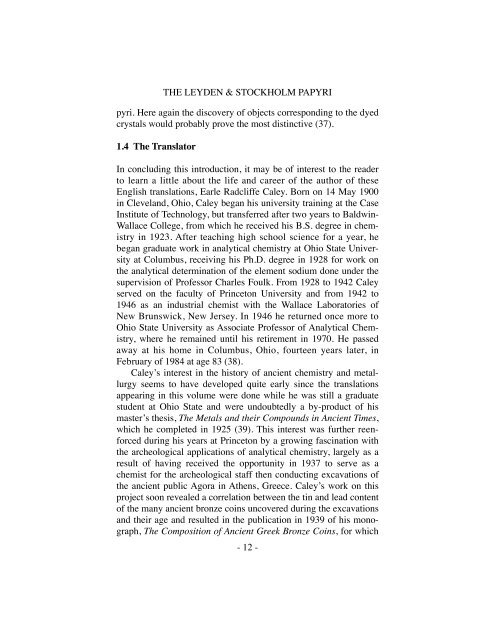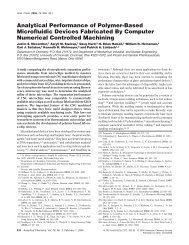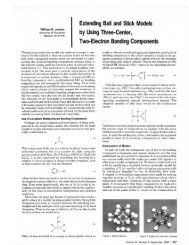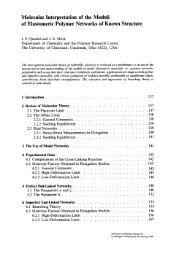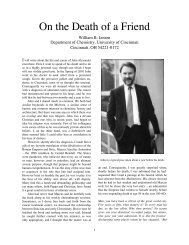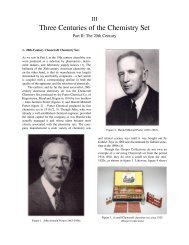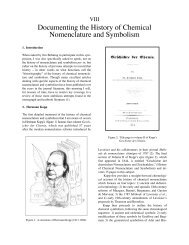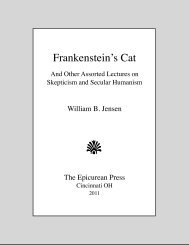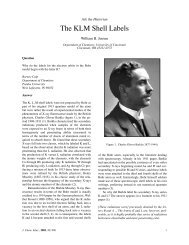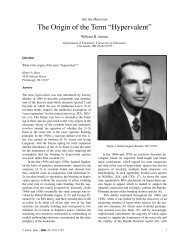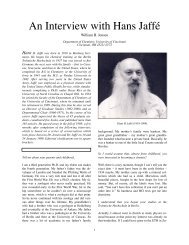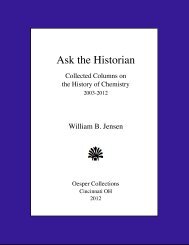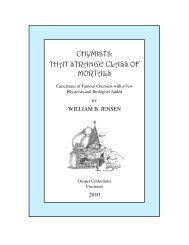The Leyden and Stockholm Papyri - University of Cincinnati
The Leyden and Stockholm Papyri - University of Cincinnati
The Leyden and Stockholm Papyri - University of Cincinnati
Create successful ePaper yourself
Turn your PDF publications into a flip-book with our unique Google optimized e-Paper software.
pyri. Here again the discovery <strong>of</strong> objects corresponding to the dyed<br />
crystals would probably prove the most distinctive (37).<br />
1.4 <strong>The</strong> Translator<br />
THE LEYDEN & STOCKHOLM PAPYRI<br />
In concluding this introduction, it may be <strong>of</strong> interest to the reader<br />
to learn a little about the life <strong>and</strong> career <strong>of</strong> the author <strong>of</strong> these<br />
English translations, Earle Radcliffe Caley. Born on 14 May 1900<br />
in Clevel<strong>and</strong>, Ohio, Caley began his university training at the Case<br />
Institute <strong>of</strong> Technology, but transferred after two years to Baldwin-<br />
Wallace College, from which he received his B.S. degree in chemistry<br />
in 1923. After teaching high school science for a year, he<br />
began graduate work in analytical chemistry at Ohio State <strong>University</strong><br />
at Columbus, receiving his Ph.D. degree in 1928 for work on<br />
the analytical determination <strong>of</strong> the element sodium done under the<br />
supervision <strong>of</strong> Pr<strong>of</strong>essor Charles Foulk. From 1928 to 1942 Caley<br />
served on the faculty <strong>of</strong> Princeton <strong>University</strong> <strong>and</strong> from 1942 to<br />
1946 as an industrial chemist with the Wallace Laboratories <strong>of</strong><br />
New Brunswick, New Jersey. In 1946 he returned once more to<br />
Ohio State <strong>University</strong> as Associate Pr<strong>of</strong>essor <strong>of</strong> Analytical Chemistry,<br />
where he remained until his retirement in 1970. He passed<br />
away at his home in Columbus, Ohio, fourteen years later, in<br />
February <strong>of</strong> 1984 at age 83 (38).<br />
! Caley’s interest in the history <strong>of</strong> ancient chemistry <strong>and</strong> metallurgy<br />
seems to have developed quite early since the translations<br />
appearing in this volume were done while he was still a graduate<br />
student at Ohio State <strong>and</strong> were undoubtedly a by-product <strong>of</strong> his<br />
master’s thesis, <strong>The</strong> Metals <strong>and</strong> their Compounds in Ancient Times,<br />
which he completed in 1925 (39). This interest was further reenforced<br />
during his years at Princeton by a growing fascination with<br />
the archeological applications <strong>of</strong> analytical chemistry, largely as a<br />
result <strong>of</strong> having received the opportunity in 1937 to serve as a<br />
chemist for the archeological staff then conducting excavations <strong>of</strong><br />
the ancient public Agora in Athens, Greece. Caley’s work on this<br />
project soon revealed a correlation between the tin <strong>and</strong> lead content<br />
<strong>of</strong> the many ancient bronze coins uncovered during the excavations<br />
<strong>and</strong> their age <strong>and</strong> resulted in the publication in 1939 <strong>of</strong> his monograph,<br />
<strong>The</strong> Composition <strong>of</strong> Ancient Greek Bronze Coins, for which<br />
- 12 -


